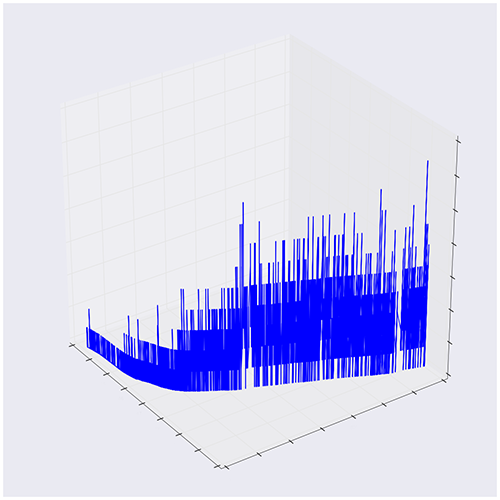I have a multivariable regression problem which basically forms a plane in 3D space. There may be other independent variables at play, but if I can approach the problem with 2 independent variables then I should be able to scale to include the rest.
Broadly, it's a resource problem. I have a required resource (z), which depends on time (x) and number of registered users (y). Registered users is a function of time, but I need the time component because the resource requirement is different at different times of the day. I want to be able to predict the resource requirement at a given time of day if our users continue to registered at a known rate.
Here is a chart of the data:
This is obviously not a linear regression problem, so how do I approach this?

